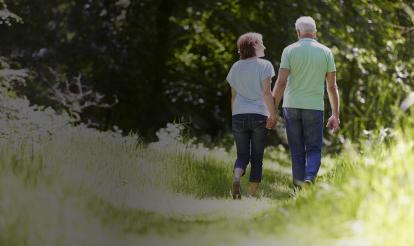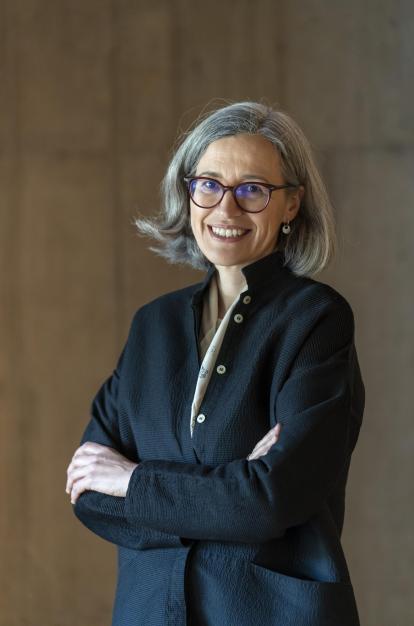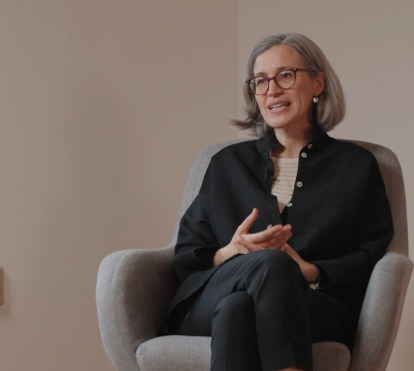
You are reading:

You are reading:

23.05.24
8 minutes readA high percentage of babies born today will live to be 100 years old. According to data from the Pew Research Center, there will be 3.7 million centenarians in the world by 2050. This increased longevity will inevitably have a profound impact on many aspects of our society, particularly in the area of health and care, a major challenge to which experts say most countries are not paying the necessary attention.
Life expectancy in Spain has risen sharply in recent years. According to the National Statistics Institute (INE), Spanish women’s life expectancy reached 85.74 years and men’s 80.36 years in 2022. This is particularly striking when compared with data from the past: in 2000, they stood at 82.73 and 75.9 years respectively, and in the now distant 1960 they were 71.66 and 66.68. Moreover, these figures, which the World Bank says are comparable to those of neighbouring countries, are expected to rise further: the Pew Research Center predicts that there will be 3.7 million people over the age of 100 worldwide in 2050, compared to around 451,000 in 2015.
All levels of society – governments, private organisations and individual citizens – need to be aware of this change and the challenges and opportunities it brings. How can we deal with this unprecedented increase in life expectancy in a controlled way while maintaining the well-being of all sections of the population?
Traditionally, old age has been associated with something negative: withdrawal from society, fragility, the end of life. In contrast to this view, the sociologist Irene Lebrusán proposes the term longevity, which moves away from this erroneous negative connotation, as she explained in the seminar “The new longevity”, organised by the Social Observatory of the ”la Caixa” Foundation in the Cap Roig Gardens on 15 and 16 April. Doctors, economists and sociologists brought to the table a multidisciplinary vision of this issue, not in search of answers, but rather to find the right questions to help us understand this transition towards longevity in areas such as health and care, the economy, work, education, identity and new social relations.

George Leeson, associate professor at Oxford University’s Institute of Population Ageing and visiting professor of Demography at the University of Guanajuato-León (Mexico), highlighted several data points about population growth, such as the fact that a third of babies born in the UK today will live to be 100 years old. For Leeson, the 21st century will undoubtedly be the century of centenarians. Despite this, he expressed concern that governments are being rather slow to adapt to these changes and their implications.
Professor Adelina Comas, an economist and researcher at the London School of Economics and Political Science and director of the Global Observatory on Long-Term Care (GOLTC), added that the demand for care services will increase significantly in the coming years. “The main challenge is that in most countries of the world we have not yet come to terms with the fact that this is happening and the consequences. The exceptions are those that are designing appropriate policies,” she emphasised.
Among the exemplary countries, Comas pointed to Japan, which also has the highest life expectancy at 87.57 years for women and 81.47 for men. “In Japan, the pandemic did not cause as much damage in care homes because they’ve been investing a lot in care in recent years, promoting a new design of care home that is very different from the Spanish model,” she said.
In the Japanese design, which resembles that of countries like Denmark, instead of living in a community, within the care home each person is housed in their own flat, which usually has a small living room, bedroom, kitchen, its own bathroom and even access to the outside. “They’re like small private homes with access to communal areas and are very service-intensive,” she explained. “Living like this, when COVID-19 arrived, it was easier to establish the necessary separations.”

The pandemic was a turning point in terms of care for older adults. “There will be more pandemics,” the expert noted, “and to deal with them we’ll have to think about more humane and efficient ways of implementing the necessary measures in care homes, taking into account what we did wrong in the past.” First and foremost, according to Comas, we should establish a robust community infrastructure of services to provide help to older adults who need it. This would allow many who now live in care institutions to remain in their own homes. “It would even be more economical,” she asserted. “On the other hand,” she continued, “many of the care homes we have are outdated, they’re not places for long-term living.” The director of the Global Observatory on Long-Term Care is a strong advocate of emulating the designs of countries like Japan, which also guarantee the right to family life.
According to Comas, the role of the public sector is crucial in this regard, as the most successful experiences in the world in providing services to older adults are publicly funded. However, in the expert’s opinion, the public system has to remember that it has the power to regulate the private sector to ensure that people receive services with an optimum level of quality. “I think it’s important to consider, for example, contracts that very clearly specify the quality levels and staffing ratios that are expected, and then set a price that is consistent with what is needed,” she stressed.
The economist maintains that a good service requires investment. It is impossible to obtain a good service in any other way, although Comas believes we should not send alarmist messages about this necessary increase in investment, as has been done in the past with talk of a “demographic tsunami”. “I don’t see that it will cause a major crisis to go from spending 1% of GDP to 3%. Countries that spend more don’t experience economic problems,” she said. According to the expert, there may simply be a need for a more positive view of what care is and what can be achieved with good investment. “Many of us are afraid of the idea that we’ll need someone to look after us in the future and I believe that’s why we don’t want to think about it,” she argued. “On the other hand, in the political arena it’s not a “sexy” expenditure and politicians are not as interested in care as they are, for example, in pensions.”

Science can also work to help people reach old age in better health. Mercè Balcells-Camps, also a speaker at the seminar organised by the Social Observatory of the ”la Caixa” Foundation, is a principal researcher at the Massachusetts Institute of Technology (MIT) School of Engineering and tenured professor at the Bioengineering Department of the Institut Químic de Sarrià (IQS). She is also working in the field of tissue engineering, a still very young scientific discipline that consists of developing artificial organs and tissues using biodegradable materials and human cells.
“Working with cells can help us understand the health problems of older adults in order to find a solution, or even, if we were to take personalised samples from a human being, to create “spare parts” for their tissues or organs,” she explained. Balcells said that in the future it will not only be possible to calculate a person’s chances of developing Alzheimer’s disease from a sample of their cells, but also to determine what types of drugs or treatments we can apply in a personalised way to slow down the progression of the disease or even cure it.
“Tissue engineering is a very powerful tool to win the battle against disease and ageing,” she stated. “We will help to improve the mobility of older adults by creating bones, knees or hips, as well as their circulatory systems and, of course, their brains.”
The sky is the limit, the doctor said of tissue engineering. “Imagine a person who’s hundreds of years old, but has the heart of a young person, a clear and productive mind... It’s science fiction, but we’re there. When we understand the disease, it’s possible to reverse it.”

As for timelines, the professor was reluctant to give a date. “Scientific processes are long and require a lot of testing. But it’s clear that we’ll start with simpler tissues, such as artificial skin or heart valves, which are already available today. Producing a pancreas or a brain will be much more challenging. Another thing will be the ethical debates, because being able to do something doesn’t mean we have to do it. Obviously, there will also be the matter of costs.”